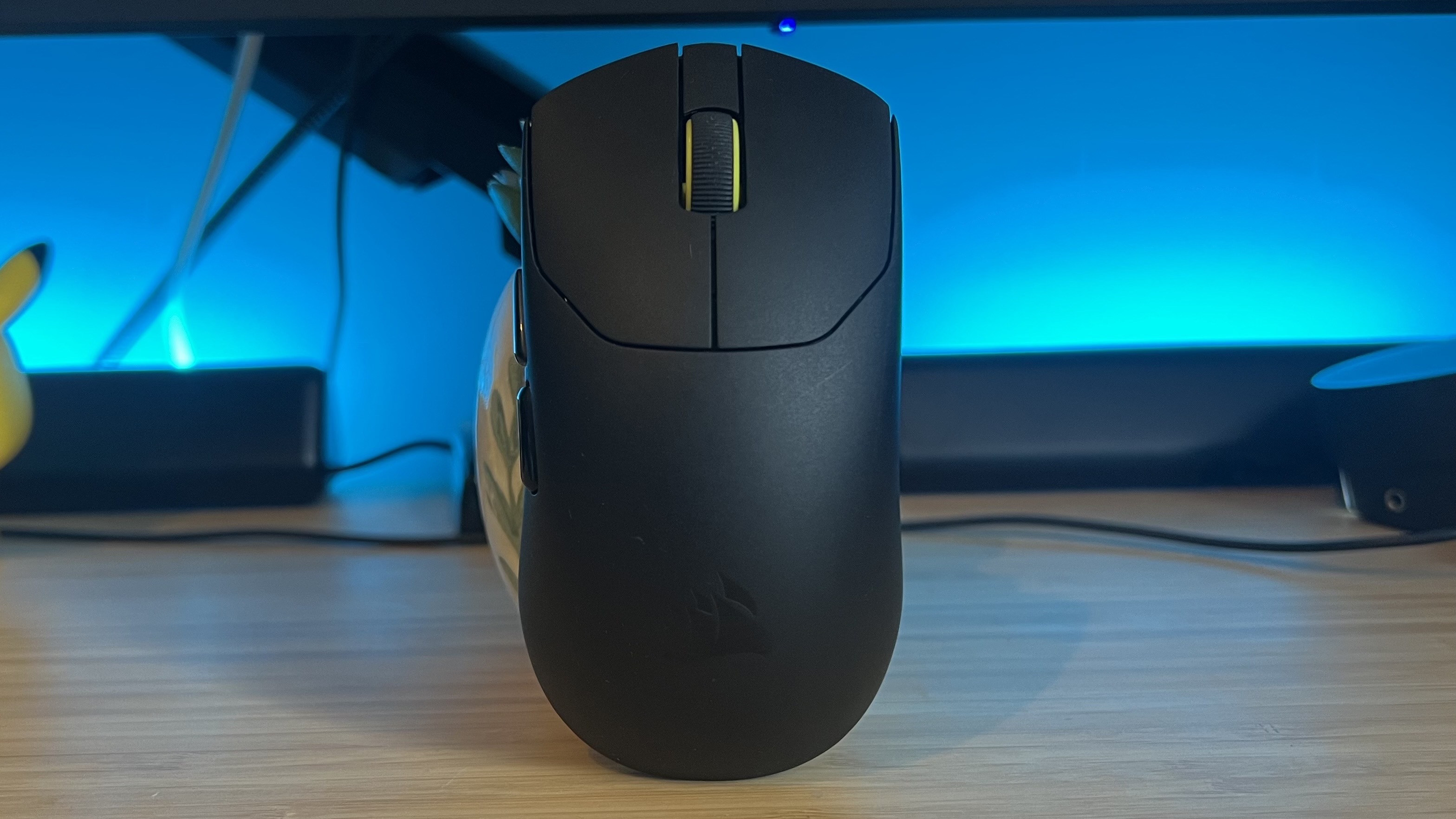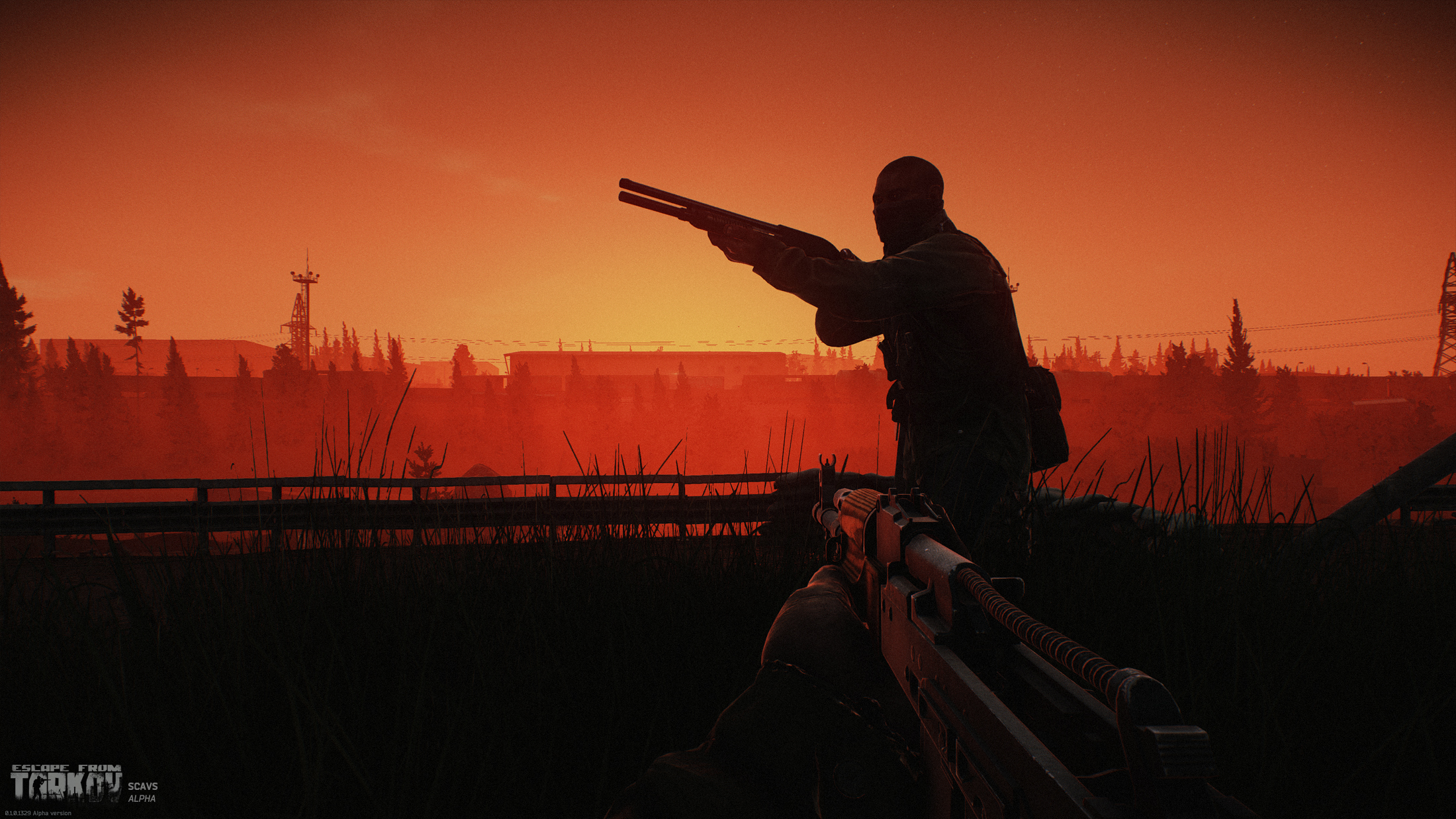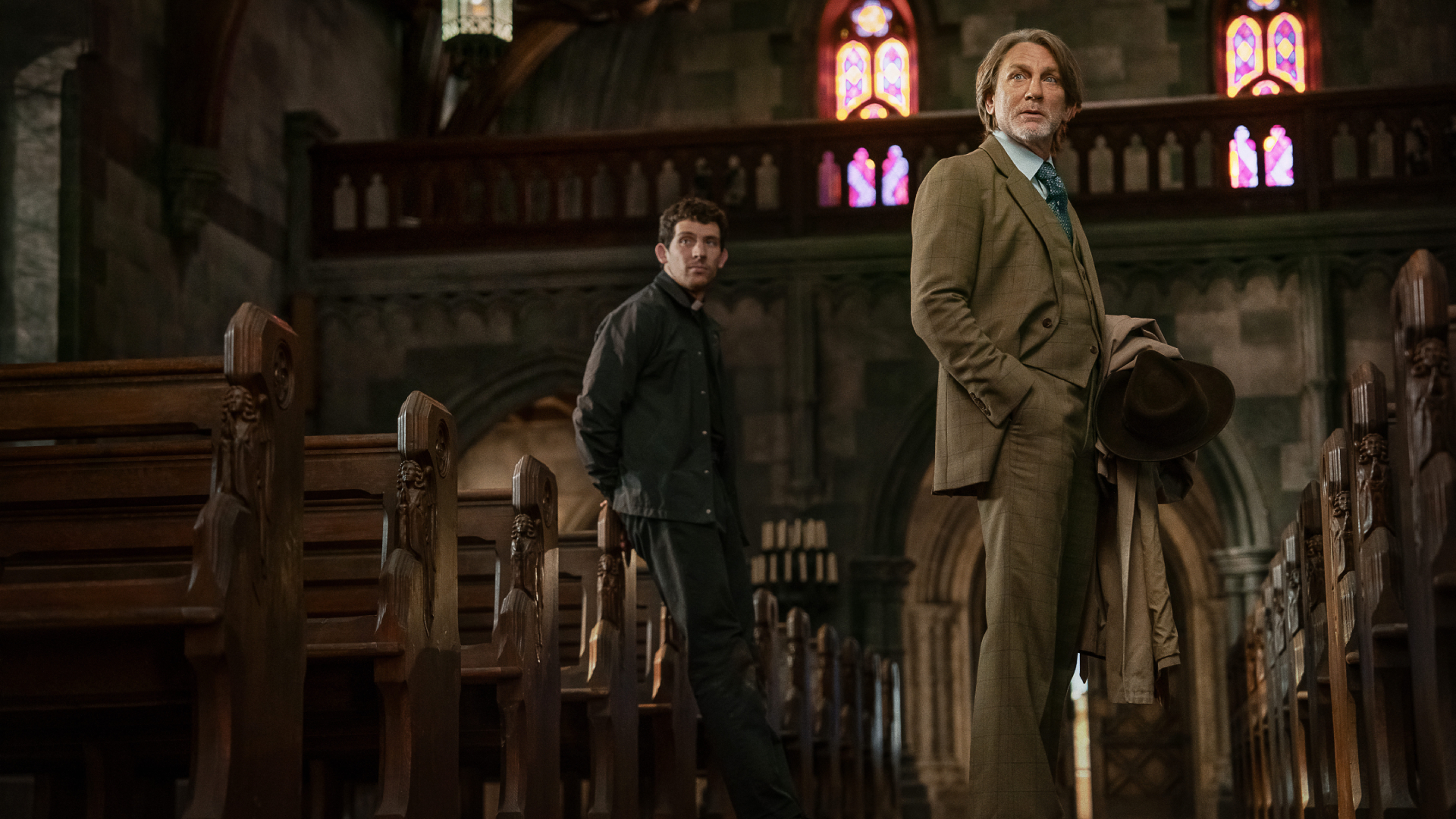GamesRadar+ Verdict
The Corsair Sabre V2 Pro Ultralight works incredibly hard at a $99.99 MSRP. This is one of the lightest mice on the market right now, and it doesn't even do away with other premium features to maintain that more affordable price point.
Pros
- +
Featherlight
- +
Comfortable shape
- +
Still solid build quality
- +
Minimal branding
Cons
- -
Awkward DPI shifting
Why you can trust GamesRadar+
I'll say it. If Razer or Logitech made the Corsair Sabre V2 Pro Ultralight it would cost $160. It's not every day I praise a brand for its restrained pricing, and I can't remember the last time I did so for Corsair, but at $99.99 / £89.99 the Sabre V2 Pro Ultralight is actually pacing incredibly well.
This is a super light 36g speedster with 8,000Hz polling, a solid 33K sensor, and even a commendable battery life with all that included. It's not the cheapest rodent on the market, but considering you're getting everything you need for a competitive run with an incredibly low weight to boot, it's certainly an interesting promise.
It's got some heavy competition from the best gaming mouse models on the market, and more of a niche to its ideal user. If you want your mouse to become an extension of your arm, though, this is the way to go.
Price | $99.99 / £89.99 |
Connection | 2.4GHz / wired |
Shape | Right-handed symmetrical |
Buttons | 6 |
DPI | 33,000 |
IPS | 750 |
Switches | Mechanical |
Weight | 36g |
Battery | Up to 70 hours |
Design
We'll start with the Corsair Sabre Pro V2 Ultralight's biggest medal. This thing weighs just 36g - that's the lightest mainstream gaming mouse I've tested yet. The lowest weight you'll typically find in a rodent from a major gaming brand like this (stepping away from smaller, more focused esports names) is around 50 - 55g. Most tend to stick to a 60 - 65g weight profile.
The Logitech G Pro X Superlight 2 DEX ups those numbers to 60g, with the Razer Deathadder V4 Pro measuring up at 56g. Both of these mice are high-end luxuries designed for low weights and high speeds.
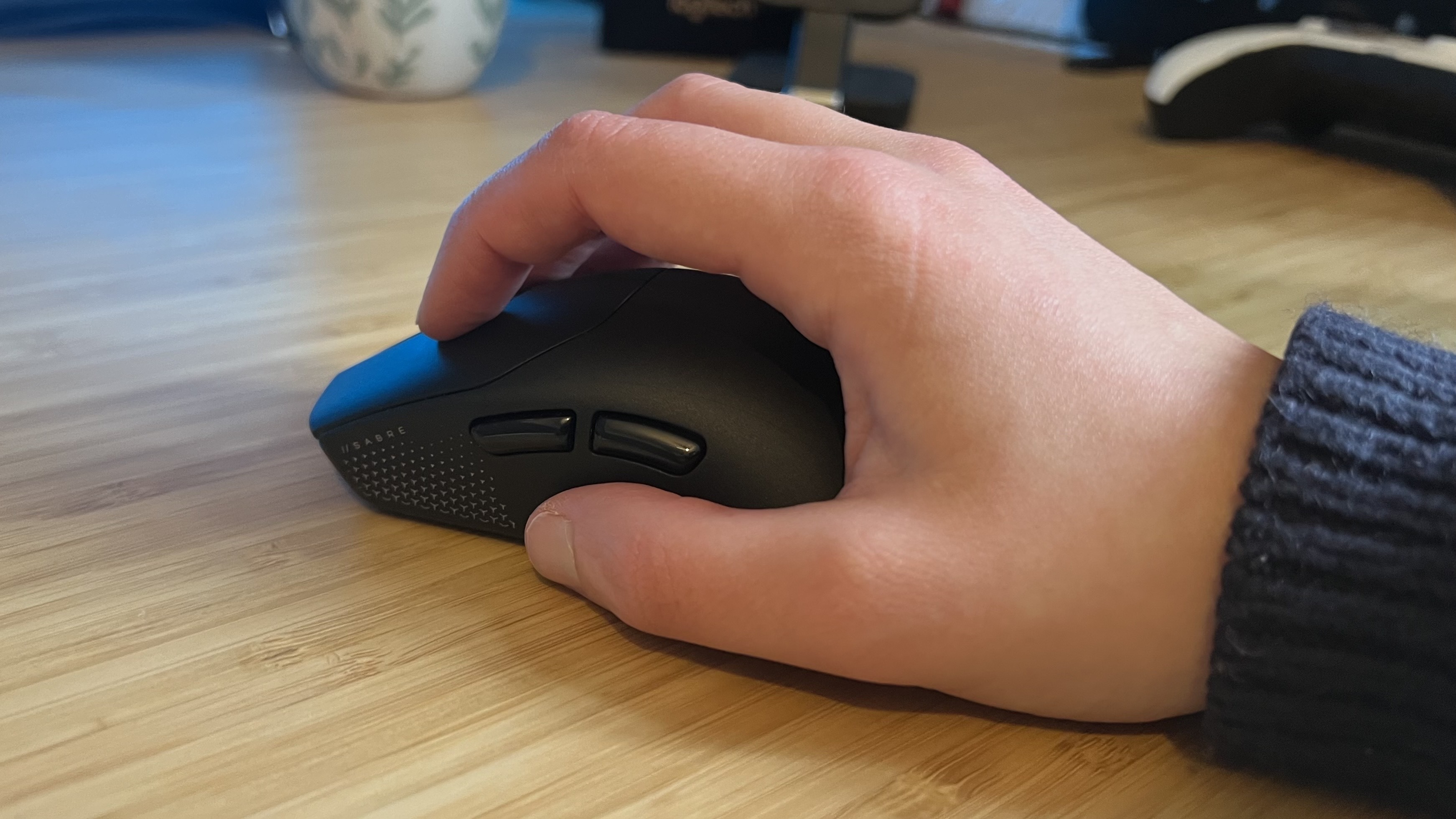
So what does that low weight actually give you in-game? It's far more noticeable in faster games, where wide sweeps, quick pivots, and twitch reflex movements in low DPI settings feel effortless. Lifting the mouse in a longer pan, for example, requires almost nothing from my thumb and pinky. If you have the reflexes to match, that can unlock some serious speed on the battlefield.
And still, the Sabre never falls into the common trap of feeling cheap at this weight. Its simple shape and matte finish make it incredibly comfortable in the hand. Where other mice like the SteelSeries Aerox 5 Wireless need to cut holes in their chassis' to achieve a low weight this is a fully intact body.
Weekly digests, tales from the communities you love, and more
That's pretty impressive. There are no uncomfortable cutouts here, we've got a smooth, crisp material to work with, and there's not a hint of a creak when squeezing the device either side to side or from the top and bottom. The Keychron M7 8K is a cheaper lightweight alternative (though it's a hefty 63g compared to the Corsair), but you do sacrifice this kind of build quality.
The Corsair Sabre Pro V2 Ultralight is available in black or white, with fairly minimal branding. A slightly glossy logo is only just visible on the back panel of my black model, with a small gradient effect in light gray at the top of the left flank.
Controls
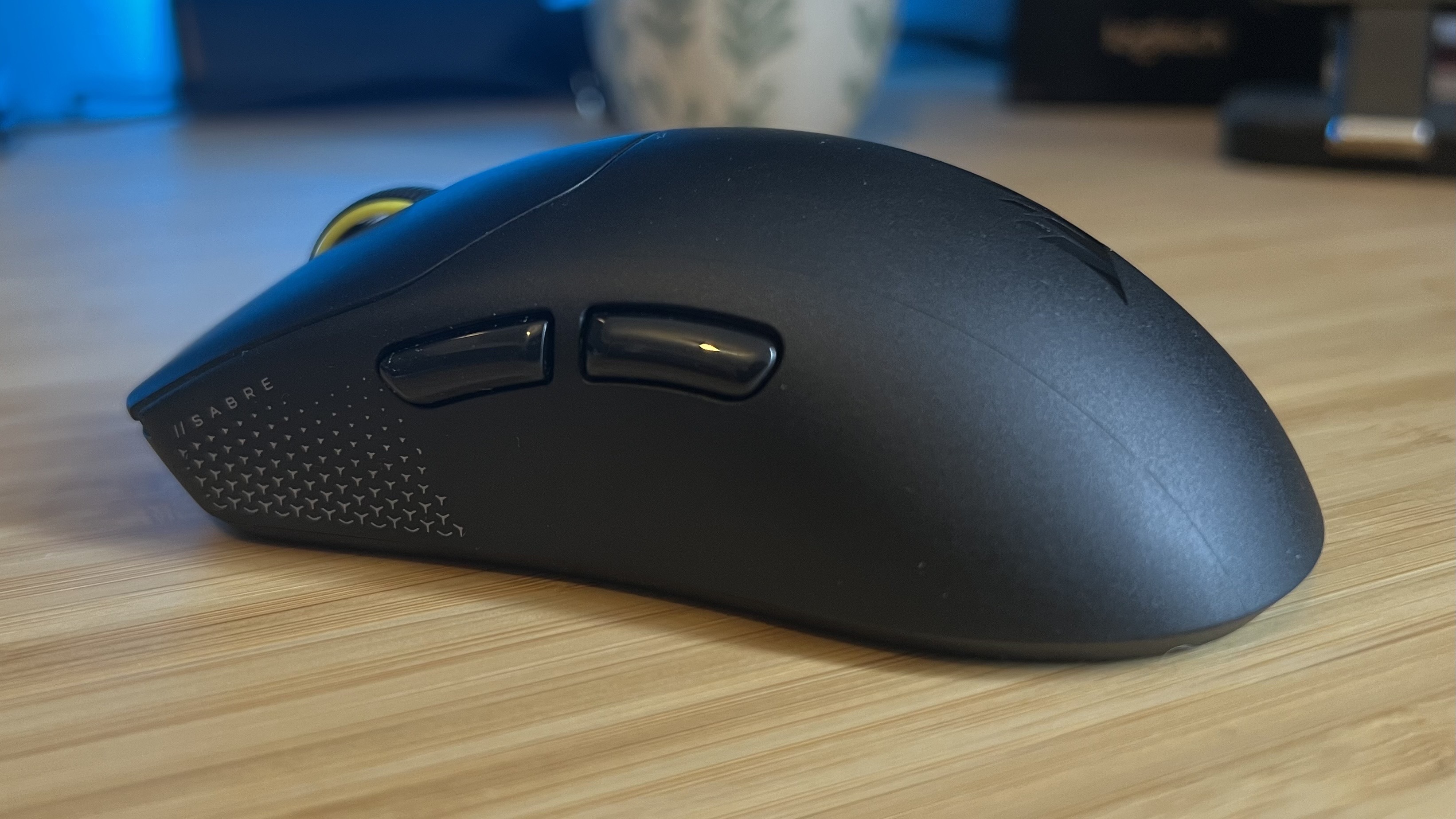
Onboard controls are light, but you're still getting the basics you'd expect from every mouse. Two side buttons are easily accessible from the left flank, sitting at just the right height. Underneath, there's just a single on/off button with no dedicated DPI or polling controls to be seen.
DPI can be shifted on the mouse itself, by holding the right mouse button at the same time as the back button for three seconds. In my experience, though, this only works when nothing else is mapped to the side button - which kind of defeats its purpose in the first place. That's tricky to get over, but if you don't tend to swap DPI on the fly it shouldn't make much of a difference.
Software
I've never been shy in my distaste for Corsair's iCue program, to the extent that the fact the Sabre V2 Pro Ultralight avoids it completely goes down as a big win my book. Everything is condensed down to a web portal, Corsair Web Hub has less depth than other native programs such as Razer Synapse but it gets the job done without clogging up your system.
Here you can change keybindings, set your own macros, and create your DPI presets. This is also where you'll be updating your firmware, tweaking polling rates, and setting sleep time to save battery. Speaking of charge, I'm always a little frustrated when web-based programs don't show me how much battery I have left. Like many others, the Corsair Web Hub just gives you a color - you have to guess the rest, I was on 'red' for a while.
Connection
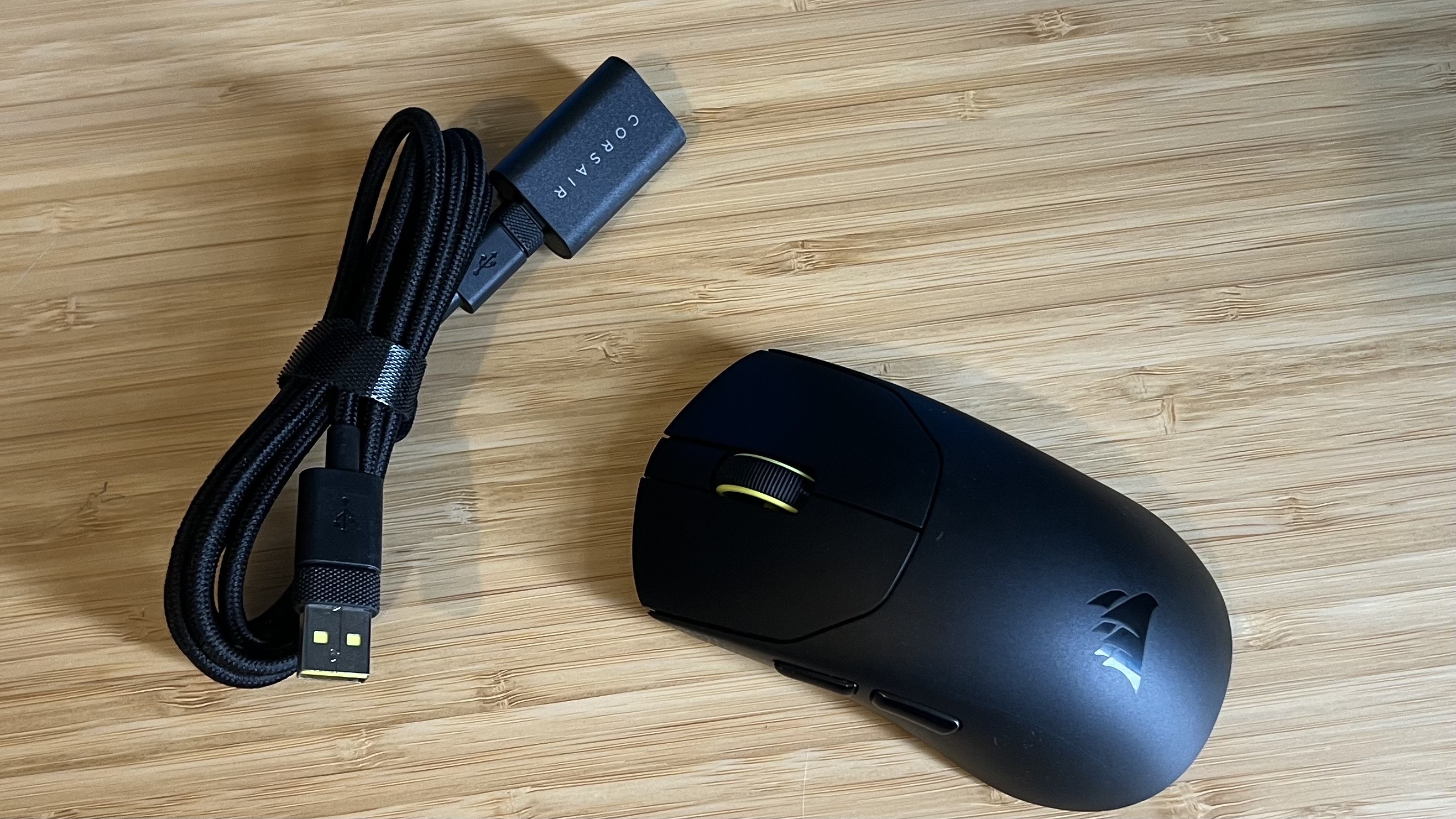
Perhaps the Corsair Sabre Pro V2 Ultralight manages to keep its price manageable by staying laser focused on its goal. There's no Bluetooth connection in here, but there rarely is on more esports-focused mice. That means you've got a little less versatility with multiple devices, but ultimately most players will be using the 2.4GHz receiver anyway.
This is, however, another cable. Razer does this as well, pops its 8,000Hz receivers onto the end of a cable rather than using a simple USB dongle like Logitech. I get the benefits. You can swing the actual receiver much closer to the mouse to reduce interference. It is frustrating to add another cable into the mix, though, especially if you're looking for the best wireless gaming mouse to cut down on the cords.
Still, this thing can poll at the full 8,000Hz over a wireless connection - something of a rarity in this sub-$100 price category. That said, the tech is getting cheaper incredibly quickly and competitors at this range are growing fast. Compared to something like the Razer Cobra Hyperspeed, though, Corsair is ahead of the game amongst more mainstream brands.
I'll say it again, though. You shouldn't be basing your whole purchase decision on this factor. High-speed polling rates will only be noticed by the top 1% of elite players, let alone be beneficial. The vast majority of us only need 1,000Hz - or 4,000Hz if you want to grow your skills.
Battery
70 hours of battery life isn't considered high in the current gaming mouse world. But there are some caveats here.
I'm actually impressed with this level of endurance. After all, a lot of weight is generally devoted to battery - and the Corsair Sabre Pro V2 Ultralight has chopped that weight right down. The Keychron M7 8K has double the battery life at 140 hours, but it's also nearly double the weight.
The NZXT Lift Elite has that same 70 hour battery inside it and bumps your weight up to 57g. Yes, you'll need to plug in more than you would with the Razer DeathAdder V4 Pro, but if a lightweight form factor means more to you it's a necessary sacrifice. We're still talking a once-weekly charging session here, and that's if it's in constant motion for ten hours a day.
Sensor
The Sabre V2 Pro Ultralight uses the brand's Marksman S optical sensor, rated at a 33,000 DPI with a 750 IPS. DPI aside (because, really, nobody runs a gaming mouse at its full sensitivity), that IPS tracking speed is up there with the upper mid-range of the moment. Premium mice from Logitech and Razer can bump that up to 888 and 900 respectively for pristine precision at high speeds, but 750 is still above average in a two-figure price tag.
In actual use, tracking is remarkably accurate and I never noticed any stuttering or deviation during faster sweeps. The sensor does, however, start to weaken when the battery gets low. This is when I noticed a little jittering during both productivity and gameplay.
Switches
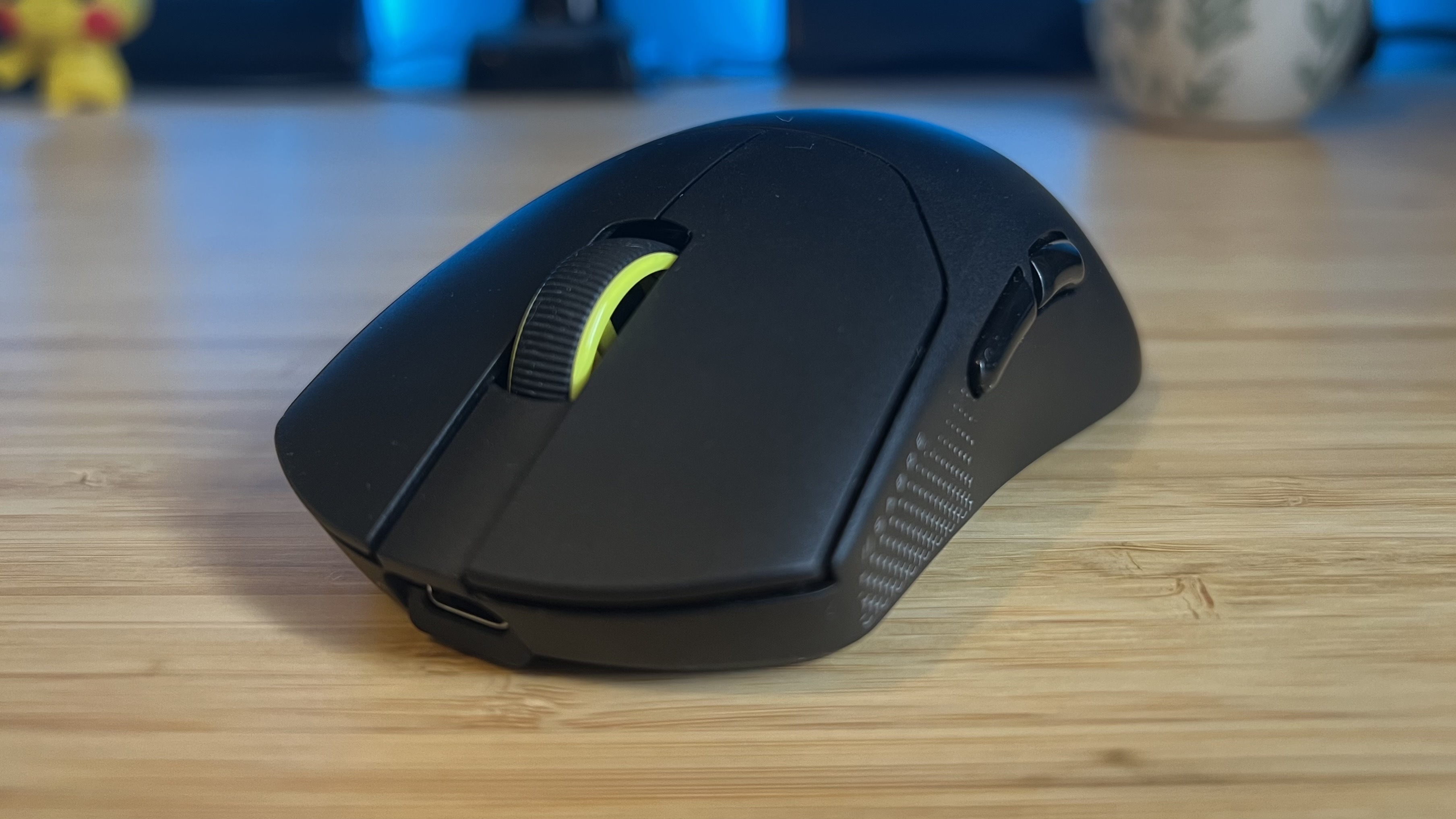
While many esports-focused gaming mice are opting for super-fast optical switches, Corsair has gone old school with its mechanical clickers. They may drop a few milliseconds off the lightning fast speeds of the likes of Razer and Logitech's fastest mice. However, they are feel much more satisfying.
Casual players aren't going to notice a difference in their battlefield speed here, but everyone will appreciate the crisp actuation. No, repeat presses aren't quite as fluid as the shortest optical clickers on the market - there's a little more resistance to each main click. They're still reliable, chatter-free, and smooth.
Should you buy the Corsair Sabre V2 Pro Ultralight?
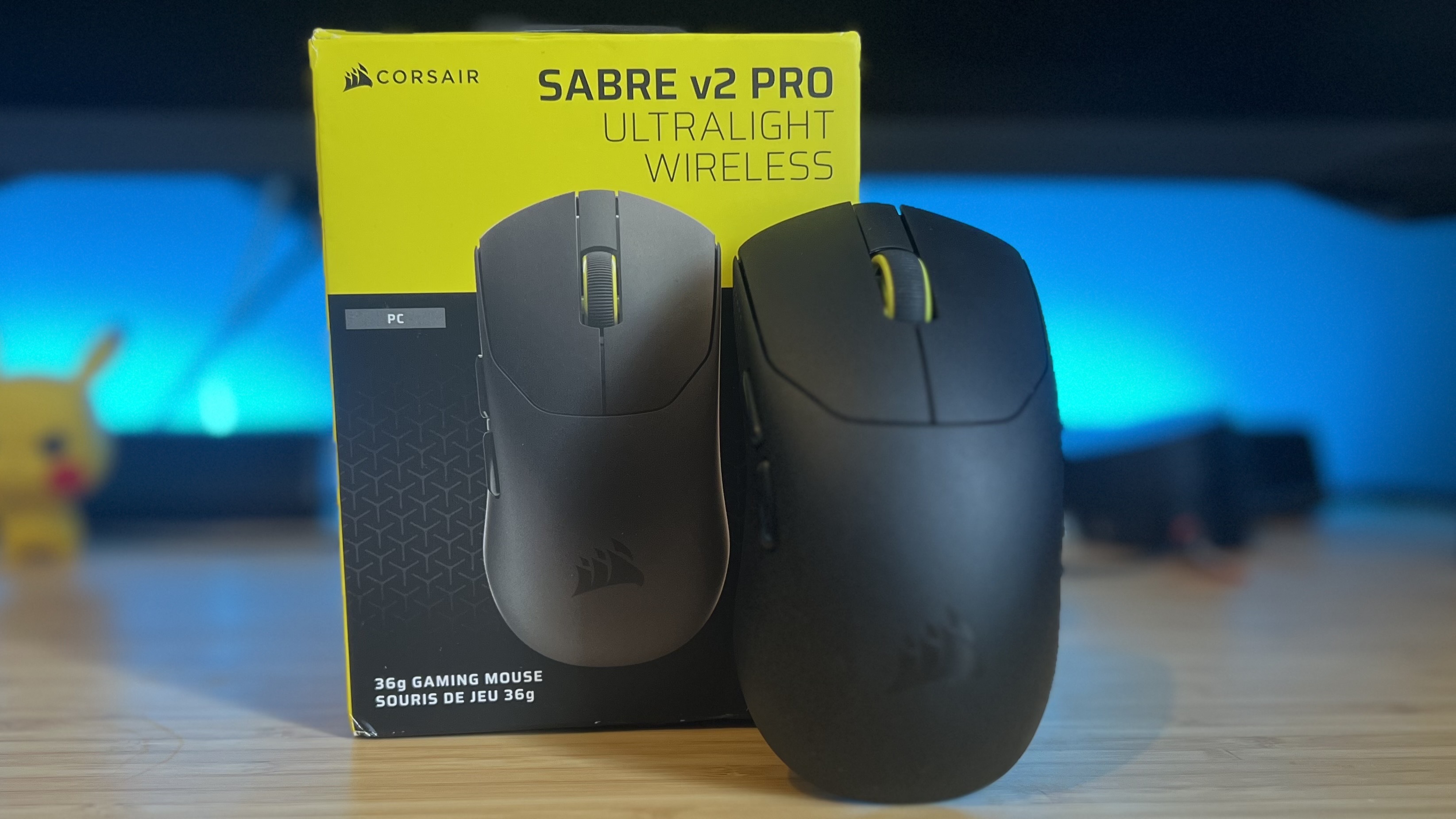
Considering the Razer DeathAddver V4 Pro comes in at $169.99 and Logitech's G Pro X Superlight 2 DEX is at a similar $159.99 MSRP, the Corsair Sabre V2 Pro Ultralight does a lot with its two-figure price tag. There are cheaper options out there, but few offer such a low weight with this kind of substance underneath.
Of course, it goes without saying, if that ultralight experience is your ultimate aim in upgrading your gaming mouse - this is a must-see. It's an incredibly fluid feeling that doesn't compromise on build quality or battery life (too much, anyway). On top of that you're getting the 8,000Hz polling rate and 750 IPS that provides the headroom for those skills to improve as well.
If, however, you're after a macro-heavy pointer for games that require more inventory management or a reliance on combos you might need something with more configurable inputs.
Comfort | 5/5 |
Speed | 5/5 |
Programmability | 3/5 |
Connectivity | 4/5 |
Battery life | 4/5 |
How I tested the Corsair Sabre V2 Pro Ultralight
I've been using the Corsair Sabre V2 Pro Ultralight for three weeks now, running the rodent for all my daily work and play during that time. I primarily tested across Doom: The Dark Ages, Apex Legends, and CS2, with a healthy amount of The Sims 2 and Spiritfarer thrown in. For more information on how we test gaming mice, check out the full GamesRadar+ Hardware Policy.
I'm also rounding up all the best Razer mice and the best Logitech gaming mouse models if you're keen to see what the competition's up to. Or, take a look at the best gaming keyboards for more setup upgrades.

Managing Editor of Hardware at GamesRadar+, I originally landed in hardware at our sister site TechRadar before moving over to GamesRadar. In between, I've written for Tom’s Guide, Wireframe, The Indie Game Website and That Video Game Blog, covering everything from the PS5 launch to the Apple Pencil. Now, i'm focused on Nintendo Switch, gaming laptops (and the keyboards, headsets and mice that come with them), PS5, and trying to find the perfect projector.
You must confirm your public display name before commenting
Please logout and then login again, you will then be prompted to enter your display name.
